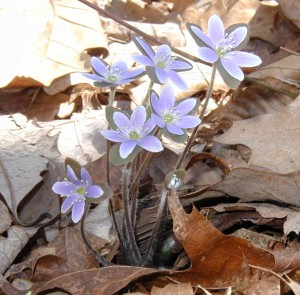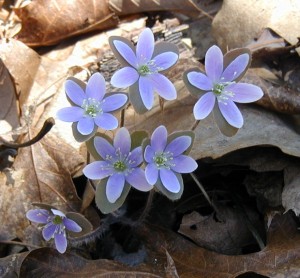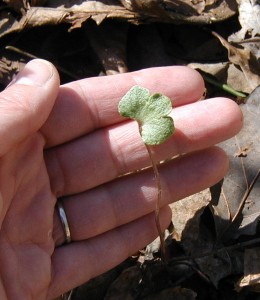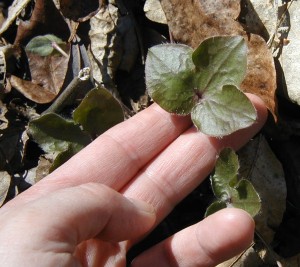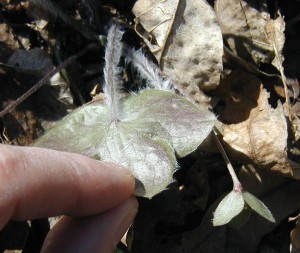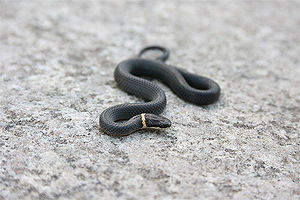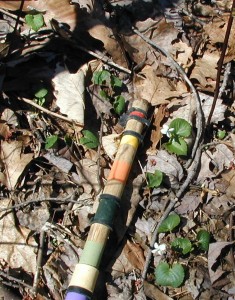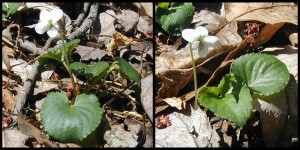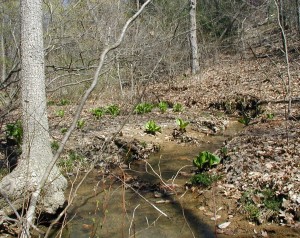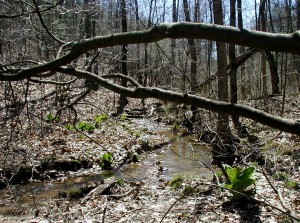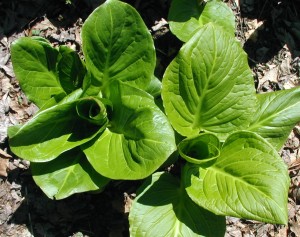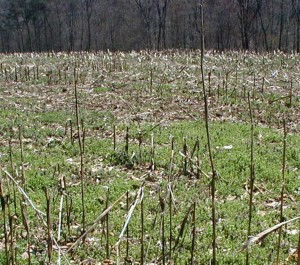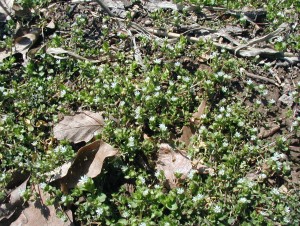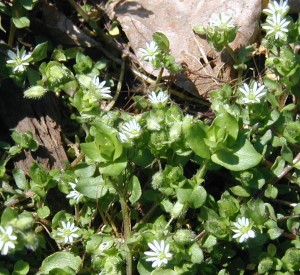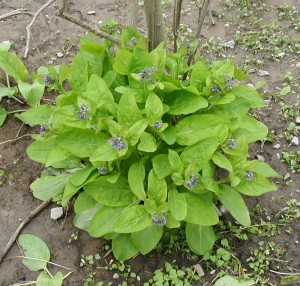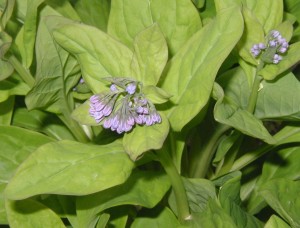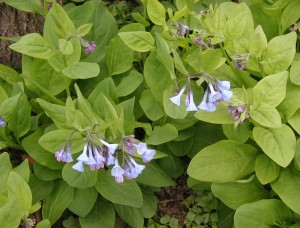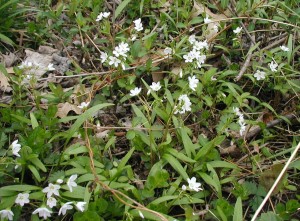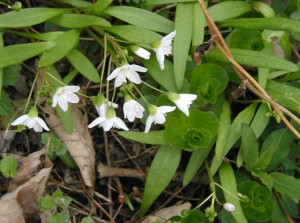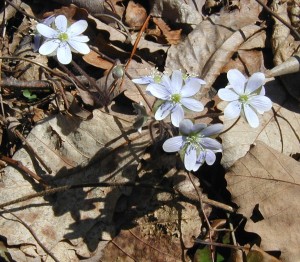Woodland walks this time of year will hold surprises for you, if you look closely. Some of the Spring Ephemeral flowers are large enough that they can be easily seen from a short distance, like the trilliums and bloodroot. Others blend into the scenery so well you may have to search for them, like the Jack-in-the-Pulpit and Rue Anemone.
Rue Anemone, Anemonella thalictroides, is a small plant only reaching 3 to 8 inches tall. The blossoms are about an inch across or smaller and the leaflets are even smaller than the blossoms. Photos taken 21 April 2011.
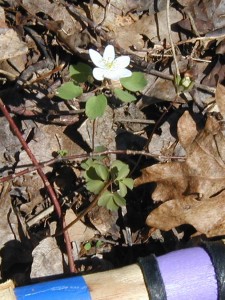
The Windflower, as Rue Anemone is called, is an appropriate name. The whole plant seems to move with the slightest breeze, like it’s dancing in the wind. Take a look at the photo above and you can see why. The whole plant rises up on a single stem and the first set of leaves is right under the flower, but they’re halfway up the stem. It’s a top-heavy plant and when the wind blows even a little bit, the windflower is going to move.
Leaves are of two types. Leaves on the flowering stalk are in a whorl underneath the flowers. Not always present are the basal leaves which have three compound leaves with three leaflets. The leaves and leaflets have three blunt, rounded lobes.
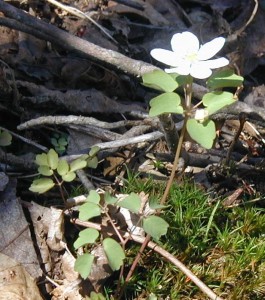
Flowers occur singly or in larger numbers on some plants. The flowers all emanate from the same point just above the leaf whorl.
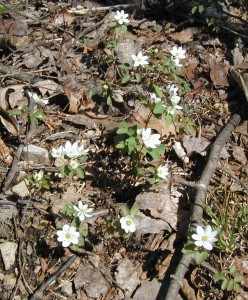
(Click photos to see a larger image.)
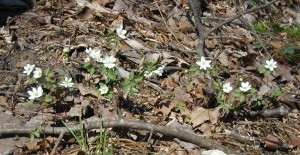
Remember that Spring Ephemerals are perennial plants. Once you spot them make a note so you can find them in future years. They can only be seen in the early Spring and after that they move into the dormant part of their lifecycle.

